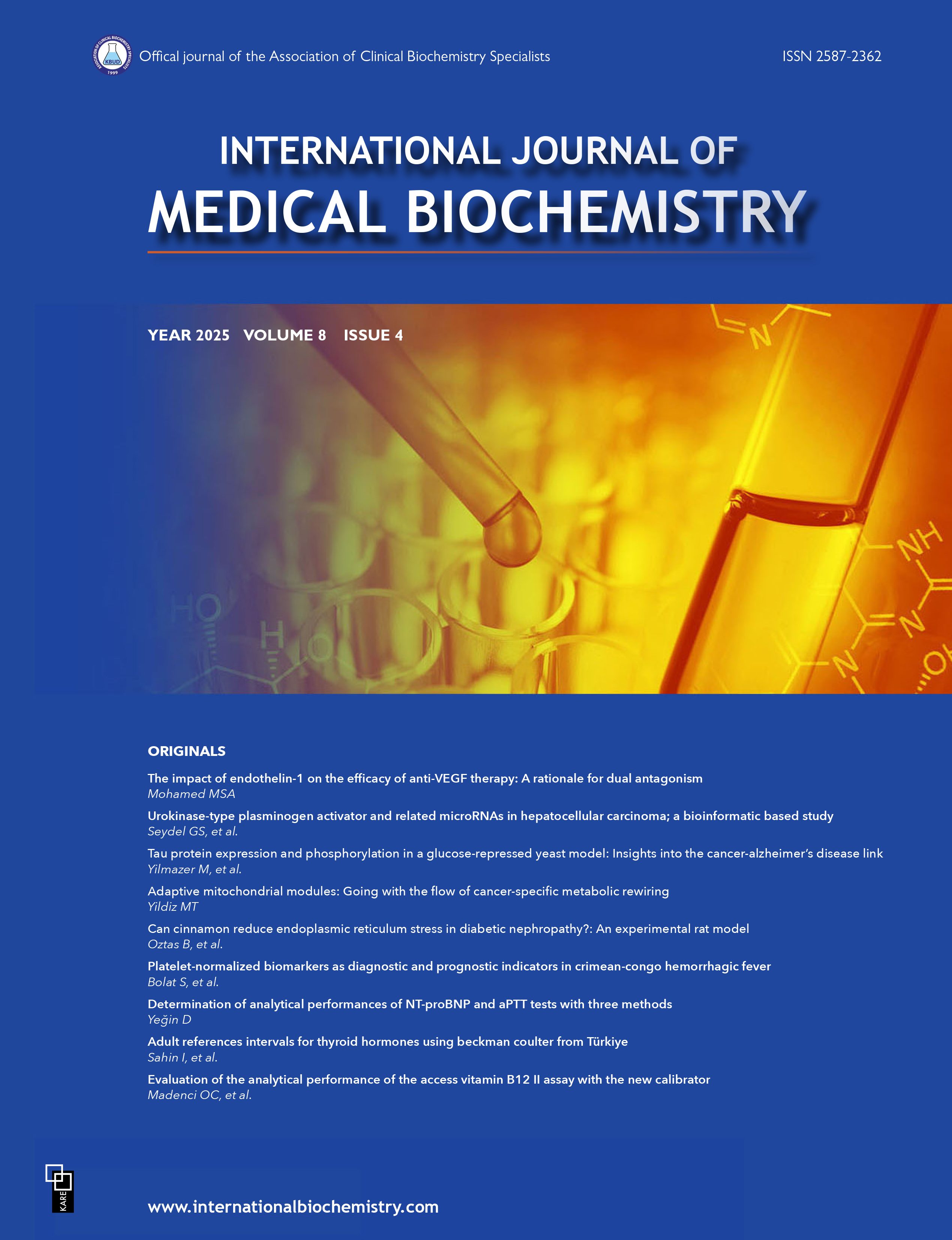Contribution of laboratory clinical consultation for excessively low Hba1c results to the diagnosis
Yasemin Tuba Sutasir1, Cemal Kazezoglu1, Selen Zeliha Mart Komurcu1, Omur Tabak21Central Laboratory, Istanbul Health Sciences University, Kanuni Sultan Suleyman Training and Research Hospital, Istanbul, Turkey2Department of Internal Diseases, Istanbul Health Sciences University, Kanuni Sultan Suleyman Training and Research Hospital, Istanbul, Turkey
When interpreting the results of a glycosylated haemoglobin (HbA1c) level, factors affecting the life span of the red blood cells should be kept in mind as it may affect the measurement of the HbA1c. Severe hemolysis may result in a falsely low HbA1c level. In this case study, in the diagnosis of hemolysis, a case who has switched the laboratory to an alarm condition is presented. In a 21-year-old male patient with hemolytic anemia, the HbA1c level was incompatible with blood glucose. Peripheral blood smear was performed by clinical laboratory consultation revealed Heinz bodies in erythrocytes, which were deficient in glucose 6 phosphate dehydrogenase enzyme. In the clinic, the diagnosis of favism due to glucose 6 phosphate dehydrogenase enzyme deficiency was considered. Glucose-6-phosphate dehydrogenase (G6PD) deficiency is the most common enzymatic disorder of red blood cells in humans. In the diagnosis of hemolysis case with clinical laboratory consultation, attention was drawn to the low HbA1c results that did not match the blood glucose measurement result. This study emphasizes that an extremely low HbA1c level can serve as a marker of hemolysis.
Keywords: HbA1c, hemolysis, laboratory consultation
Manuscript Language: English







